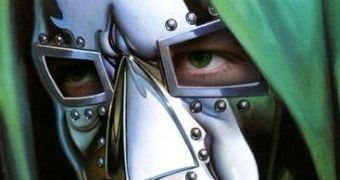On November 19, 1703, in the fortress prison of Bastille, Paris, a mysterious character of unknown identity died. His face was covered by a mask of black velvet cloth since he was made prisoner 25 years before, and his guardians had received the order to kill him if he uncovered his face or addressed other issues than his immediate needs.
The identity of this man represents even today a total mystery because no one ever saw his face, and in time, the mask turned into an iron one. Most information about this prisoner is based on correspondence between his jailer and his superiors in Paris.
The prisoner's story started in July 1, 1669, when Louis XIV's minister, the Marquis de Louvois, sent a masked prisoner to the care of B?nigne Dauvergne de Saint-Mars, governor of the prison of Pignerol (now northwestern Italy). Louvois wrote that this particular man was called Eustache Dauger and had been arrested in Dunkirk.
Louvois asked for the prisoner a cell with multiple doors, to impede anyone from the outside listening in.
Saint-Mars' other famous prisoners at Pignerol were Nicholas Fouquet and the Marquis de Lauzun.
Dauger was not always isolated from the other prisoners; since 1675, he acted as servant for Fouquet when his actual servant was ill. But if Fouquet and Lauzun were to meet, Dauger was not to be present. Fouquet was never expected to escape from prison, thus encountering Dauger was a matter of no concern, but Lauzun could eventually be set free and it appears some were worried not to spread rumors of Dauger's existence.
Following Fouquet's death in 1680, a secret hole between Fouquet and Lauzun's cells was found. In this case Lauzun could have been aware of the masked prisoner's existence. Lauzun was moved to Fouquet's cell and told that Dauger had been released, while he was held in another cell on the opposite side of the prison.
In 1681, Saint-Mars was named governor of the prison fortress of Exiles, and took Dauger with him. In 1687, Dauger was moved to the island of Sainte-Marguerite, one of the L?rins Islands. During this journey started the rumors that the prisoner was wearing an iron mask. In 1698, Saint-Mars was named governor of the Bastille and brought the masked prisoner with him.
Next day after his death, the prisoner's corpse was buried in the cemetery of the parish Saint John, under the name of Marchioly.
All the precautions and mysteries surrounding the life of this prisoner started the legends.
50 years later, Voltaire, in his book "The century of the Louis XIV" ensures that this was an older brother of the king, due to the fact that the report of his death was written by Du Junca, royal representative in the prison.
According to the letters of Louis XIV, the prisoner could have been General Vivien de Bulonde.
Many other names have been suggested since: the corrupt finance minister Nicholas Fouquet; count de Vemandois, legitimate son of the king, Ercole Mattioli, state secretary of the duke of Mantua and double agent in the conflict between France and Lombardy and the dukes of Montmouth and de Beaufort, which fought against the French Bourbon dynasty.
The truth is still unknown?

 14 DAY TRIAL //
14 DAY TRIAL //